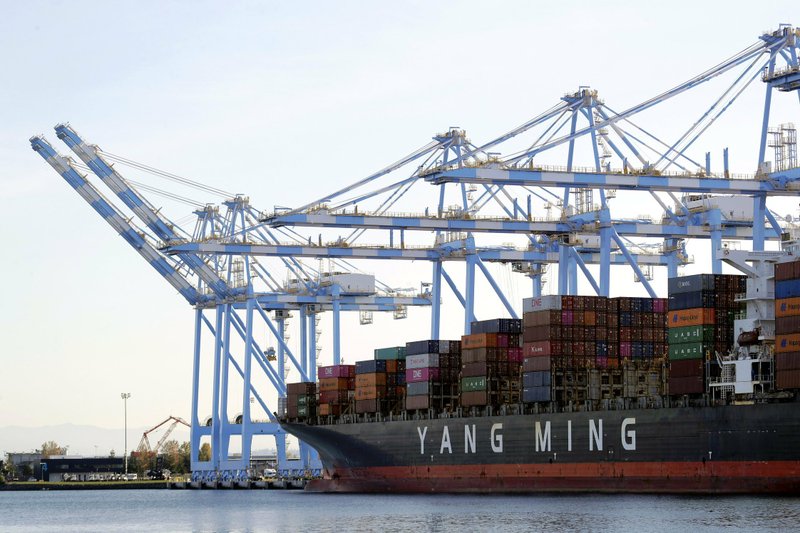WASHINGTON -- The U.S. trade deficit tumbled in February to the lowest level since 2016 as exports fell and imports fell more. The politically sensitive gap in the trade of goods with China narrowed in February when the world's No. 2 economy was locked down to combat the coronavirus outbreak.
The Commerce Department said Thursday that the gap between what the U.S. buys and what it sells abroad dropped 12.2% to $39.9 billion in February, the lowest since September 2016. The median estimate of economists surveyed by Bloomberg had called for a $40 billion shortfall.
Exports fell 0.4% to $207.5 billion. Imports skidded 2.5% to $247.5 billion.
The goods trade gap with China fell 17% to $19.7 billion on a 13% drop in imports. The trade deficit with China is the narrowest since 2009, as most of the Asian nation was locked down during the virus battle.
[CORONAVIRUS: Click here for our complete coverage » arkansasonline.com/coronavirus]
In February, the United States ran a $61.2 billion deficit in the trade of goods such as aircraft and appliances. But it ran a $21.3 billion surplus in services such as education and tourism.
President Donald Trump campaigned on a pledge to reduce America's huge trade imbalances, especially with China. He has imposed tariffs on $360 billion worth of Chinese imports. Last year, the U.S. trade deficit dropped for the first time in six years.
Also, Covid-19 is devastating global trade as economies around the world isolate themselves to fight the outbreak.
The latest data show that foreign trade was already diminishing even before global supply chains faced unprecedented disruption in March. International trade flows were substantially impaired last month, with a gauge of new export business in the JPMorgan Global Manufacturing index falling at the fastest pace in almost 11 years.
The report showed that spending for travel, among the largest components of services exports, tumbled 7% from January, the most since the aftermath of the September 2001 attacks on the U.S., to $16.6 billion. The category involves business travel -- including expenditures by short-term workers and personal travel -- and health- and education-related activity. It excludes air passenger services for travel between countries.
American and Chinese officials say they are continuing to enforce the terms of the initial trade deal they signed in January -- though analysts have expressed doubts about the potential for U.S.-China trade to proceed entirely undisrupted, given the cratering economy in both nations.
If China fails to meet its commitment under the deal to buy an additional $200 billion of products by 2021, trade tensions could revive again.
Information for this article was contributed by Paul Wiseman of The Associated Press; by Jeff Kearns of Bloomberg News; and by Edward Wong and Ana Swanson of The New York Times.
Business on 04/03/2020
